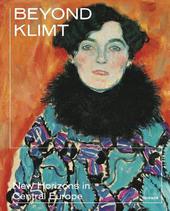
|
Beyond Klimt: New Horizons in Central Europe
Hardback
Main Details
| Title |
Beyond Klimt: New Horizons in Central Europe
|
| Authors and Contributors |
Edited by Stella Rollig
|
|
Edited by Alexander Klee
|
| Physical Properties |
| Format:Hardback | | Pages:392 | | Dimensions(mm): Height 285,Width 232 |
|
| Category/Genre | The arts - general issues
Art and design styles - c 1900 to c 1960
History |
|---|
| ISBN/Barcode |
9783777430591
|
| Classifications | Dewey:709.409042 |
|---|
| Audience | |
|---|
| Illustrations |
Illustrated in colour throughout
|
|
Publishing Details |
| Publisher |
Hirmer Verlag
|
| Imprint |
Hirmer Verlag
|
| Publication Date |
5 July 2018 |
| Publication Country |
Germany
|
Description
1918 marked the end of a golden era: it was the year that Gustav Klimt, Egon Schiele, Koloman Moser, and Otto Wagner died. Artistic activity, however, had already freed itself of their influence. Hardly affected by the political disruptions taking plac e, artists in the countries of the former Austro - Hungarian monarchy were busily productive, driven by a desire for a new start. The period between the two World Wars is characterised in the arts by international networks that transcended political and id eological borders. A lively artistic exchange took place, stimulating constructive, expressionist, and fantastic tendencies. An increasingly important role was played by magazines that disseminated new positions. The outbreak of World War II abruptly inter rupted these cosmopolitan art networks. This publication examines the fascinating, artistically fruitful epoch between the wars.
Author Biography
Stella Rollig is general director and scholarly executive manager of the Belvedere Museum in Vienna and the coeditor of Maria Theresa and the Arts, also published by Hirmer Verlag. Alexander Klee is curator for modern and contemporary art at the Belvedere Museum in Vienna and the coeditor of Sin and Secession, also published by Hirmer Verlag.
Reviews"With the deaths of Klimt, Schiele, Otto Wagner and Kolomon Moser, it has been thought that their creative energy came to a halt or mutated into other areas, such as the Bauhaus. This book charts a new trajectory in the art and artists of the successor states of the Empire entre deux guerres . . . . Much of this has not been explored except by specialists and this book will serve to alert a wider audience to the considerable riches of the Secession's afterlife." -- "The Art Newspaper"
|